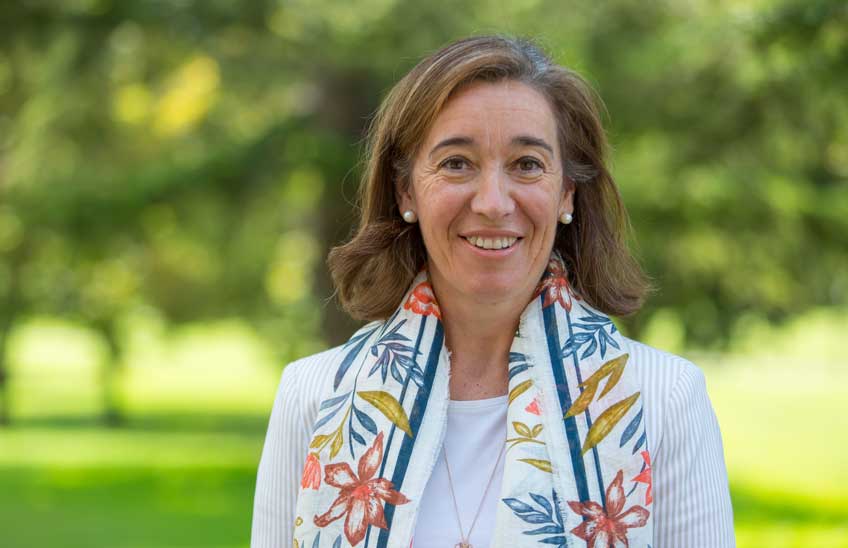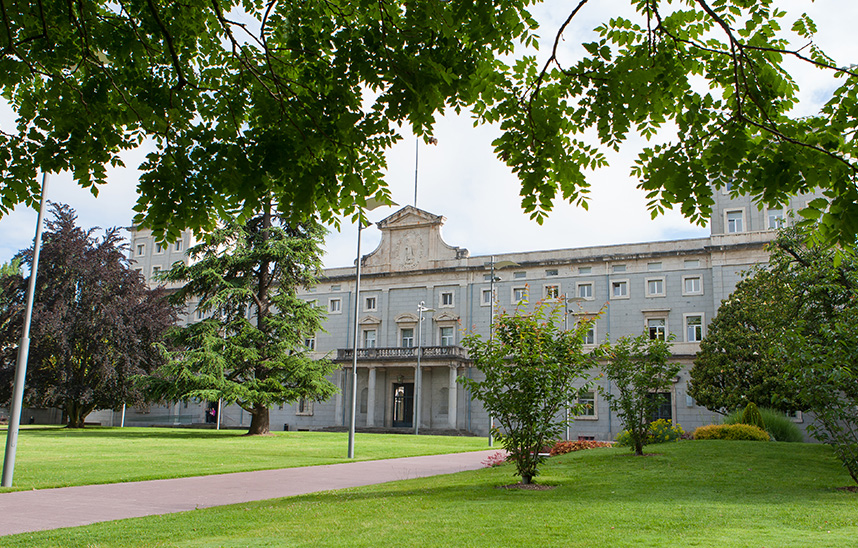Julia Pavón: "40% of the members of the Orders of the Hospital and the Temple in the 12th and 13th centuries were women".
The principal investigator of group 'Links, creativity and culture' of the ICS has led a study on the power of these institutions to transform social relations and religiosity of the time.

PhotoManuelCastells
/Julia Pavón.
04 | 07 | 2024
Two open institutions, far from the rigidity with which they have usually been portrayed and with a great power to transform the society of their time. This is the panoramic image of the military orders of St. John and the Temple that sample the project of research El Hospital y el Temple en la Corona de Aragón y Reino de Navarra (XII-XIII century), carried out within the Institute for Culture and Society of the University of Navarra. The study, funded by the Ministry of Science and Innovation of the Government of Spain, has been led by Professor of Medieval History Julia Pavón, principal investigator of group Links, creativity and culture of the ICS and dean of the School of Philosophy and Letters.
As Pavón explains, the goal of the research has been twofold. On the one hand, "to take the research of the military orders, specifically, the Order of St. John and the Temple, out of the traditional historiographical field of study, because it has usually focused on questions of their government, internal organization, economic projection and links with the Holy Land, since they are institutions that were born in the wake of the Crusades".
And in relation to this end, a second goal: "To study the manifestations of the religiosity of these orders, that is to say, how they transmit and project their experiential, religious and spiritual models". In this sense, the work has shown how these European institutions functioned in the twelfth and thirteenth centuries as an engine for the transformation of social ties and religiosity.
Debunking myths
"As they were born in the wake of the reform of the Church in the 11th century, from which a greater presence and participation of the laity in religious life was observed, we have seen that there are many families and people, especially women, who are linked to the Order of the Temple, as associates and confreres. They do not necessarily belong to the Order", the researcher specifies.
For example, in the area of Navarre and Aragon, it is estimated that there were about 600 people, from the high aristocracy and local elites, linked to the orders, either because they wanted to receive burial in their spaces or because they donated goods for the care of the hospital, which welcomed pilgrims, passers-by or people in need. Forty percent were women.
"It tells us that there are people who are not linked to the big monasteries or the big ecclesiastical institutions but have Catholic religious devotions that are in tune with the reform of the Church, which seeks openness in relation to the ways of doing things," he explains.
One of the examples is found in Cizur Menor: "The flag of the Order of Malta, the order of the Hospitallers, flew there, and it was a very important seat. It had a convent of freires of the order, a hospital for the care of pilgrims, a fortified enclosure and a church. Many families from the Pamplona basin wanted to be buried there".
The research also makes it possible to redraw the history of the Hospital and the Temple, in the light of the documents studied, which dismantle some myths, such as the wealth that is usually associated with the Templar order. The researcher explains that, because of its work to maintain the crusades in the Holy Land, the responsiones were sent annually, which included horses, swords and money, so they were in contact with economic items. "It is very interesting because, at a time when barter predominates, they establish the instructions of modern banking," she points out.
These orders, which did not depend on the bishop but on the Papacy, which granted them special protection, were very well received by the society of the time. They received support both for safeguarding military unity in the war against Islam and for their role in the care of pilgrims, especially on the Camino de Santiago.




